| Previous | Index | Next |
The home laboratory
YOU CAN CARRY OUT MOST of the experiments in this
book with simple things that you will find at home, or which you can easily buy at little expense. On these two pages you can see the kinds of equipment you will need. If you do not have the exact items, you can probably find something similar that will do. Follow the instructions and you will find out how all kinds of things work. But always take great care, especially when using electricity, hot objects, or sharp implements.
Weights and measures
All weights and measures in this book are given in two systems: English, which uses units such as inches (in), and metric, which uses units such as centimeters (cm). Make measurements in only one of these systems. Do not
use both systems in the same experiment. Most measurements are specific, but where approximate amounts are indicated the numbers are rounded to the nearest full unit.
Containers
Plastic or glass containers of several sizes are needed: plastic cups, pots, and food containers often work well. Some containers must be watertight or airtight, so check for cracks and badlyfitting lids or tops.
Tools
You will need tools to cut things, make holes, and hold items together. A vise may help to grip an object as you work on it. In some experiments goggles are essential to protect your eyes. Use wire strippers to cut and strip wires, not scissors. A hand drill is easier and much safer to use than an electric drill. A compass can be used to make small holes as well as to draw perfect circles.
Craft knife
Compasses
Goggles
Phillips screwdrive,
File
Tenon saw
Hammer
889
Wire
Plastic bottles
s
Bowl
10' Plastic containers
( ilass containers
Crocodile 4.5V 9V hatter_'
clips hasten
Electrical equipment
Many experiments need electricity in order to work. Connect wires very carefully. Remember that an experiment may not work, or may stop working, because just one wire has come loose-or because the hit t cry has died!
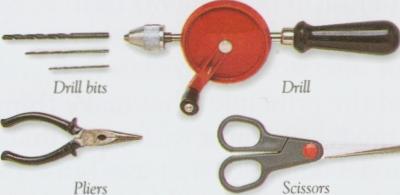
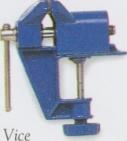
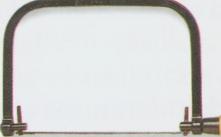
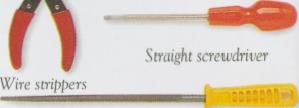


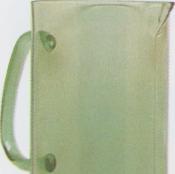
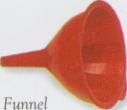
| Previous | Index | Next |